
Twenty Thousand Leagues Under the Seas is a science fiction adventure novel by the French writer Jules Verne. It is often considered a classic within both its genres and world literature. The novel was originally serialised from March 1869 to June 1870 in Pierre-Jules Hetzel's French fortnightly periodical, the Magasin d'éducation et de récréation. A deluxe octavo edition, published by Hetzel in November 1871, included 111 illustrations by Alphonse de Neuville and Édouard Riou.
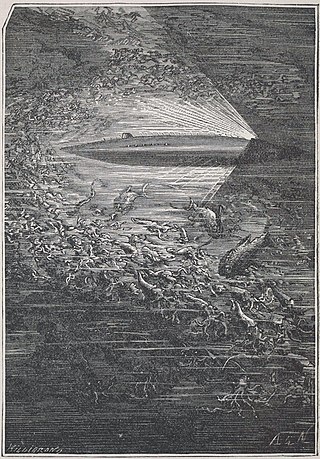
Nautilus is the fictional submarine belonging to Captain Nemo featured in Jules Verne's novels Twenty Thousand Leagues Under the Seas (1870) and The Mysterious Island (1875).

Captain Nemo is a character created by the French novelist Jules Verne (1828–1905). Nemo appears in two of Verne's science-fiction books, Twenty Thousand Leagues Under the Seas (1870) and The Mysterious Island (1875). He also makes a brief appearance in a play written by Verne with the collaboration of Adolphe d'Ennery, Journey Through the Impossible (1882).

The submarine film is a subgenre of war film in which most of the plot revolves around a submarine below the ocean's surface. Films of this subgenre typically focus on a small but determined crew of submariners battling against enemy submarines or submarine-hunter ships, or against other problems ranging from disputes amongst the crew, threats of mutiny, life-threatening mechanical breakdowns, or the daily difficulties of living on a submarine.

The Mysterious Island is a novel by Jules Verne, serialised from August 1874 to September 1875 and then published in book form in November 1875. The first edition, published by Hetzel, contains illustrations by Jules Férat. The novel is a crossover sequel to Verne's famous Twenty Thousand Leagues Under the Seas (1870) and In Search of the Castaways (1867–68), though its themes are vastly different from those books. An early draft of the novel, rejected by Verne's publisher and wholly reconceived before publication, was titled Shipwrecked Family: Marooned with Uncle Robinson, indicating the influence of the novels Robinson Crusoe and The Swiss Family Robinson. Verne developed a similar theme in his novel, Godfrey Morgan.

The Submarine Voyage was an attraction at Disneyland in Anaheim, California. The attraction features vehicles designed to resemble submarines. It first opened on June 14, 1959, as one of the first rides to require an E ticket. It was part of a major expansion of Tomorrowland, which included the Matterhorn Bobsleds roller coaster, an expanded version of Autopia, the Disneyland Monorail, and the Motor Boat Cruise. The Submarine Voyage closed on September 8, 1998; at that time, it was reported that the attraction would reopen with a new theme by 2003, but that did not occur. The attraction ultimately reopened in June 2007 themed to Disney and Pixar's Finding Nemo, and now operates as Finding Nemo Submarine Voyage.

Les Mystères du Nautilus is a walkthrough attraction at Disneyland Paris in France. It is an updated version of the 20,000 Leagues Under the Sea walkthrough attraction that was at Disneyland in Anaheim, CA in the early 1950s, based upon the film of the same name. This attraction takes guests throughout the various rooms of Captain Nemo's submarine, especially those seen in the film. It opened on 4 July 1994.
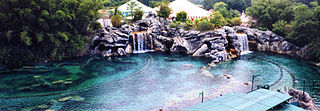
20,000 Leagues Under the Sea: Submarine Voyage was an attraction at the Magic Kingdom theme park at Walt Disney World from 1971 through 1994. Based on the characters and settings of the 1954 Disney film 20,000 Leagues Under the Sea, which was adapted from Jules Verne's 1870 novel Twenty Thousand Leagues Under the Seas, it was a re-theming of the Submarine Voyage attraction at Disneyland. The ride involved a 20-minute submarine ride through a lagoon filled with sea life and mermaids.

20,000 Leagues Under the Sea is a 1954 American science fiction adventure film directed by Richard Fleischer, from a screenplay by Earl Felton. Adapted from Jules Verne's 1870 novel Twenty Thousand Leagues Under the Seas, the film was produced by Walt Disney Productions. It stars Kirk Douglas, James Mason, Paul Lukas, and Peter Lorre. Photographed in Technicolor, the film was one of the first feature-length motion pictures to be filmed in CinemaScope. It was also the first feature-length Disney film to be distributed by Buena Vista Distribution.

Captain Nemo and the Underwater City is a 1969 British film directed by James Hill and starring Robert Ryan, Chuck Connors and Nanette Newman. It features the character Captain Nemo and is inspired by Jules Verne's 1870 novel Twenty Thousand Leagues Under the Seas. It was written by Pip and Jane Baker.

The Return of Captain Nemo is a 1978 American science fiction adventure television miniseries directed by Alex March and Paul Stader, and loosely based on characters and settings from Jules Verne's 1870 novel Twenty Thousand Leagues Under the Seas. It was written by six screenwriters including Robert Bloch and has been considered an attempt by producer Irwin Allen to duplicate the success of his Voyage to the Bottom of the Sea.

20,000 Leagues Under the Sea is a 1997 two-part television miniseries produced by Village Roadshow Pictures Television, based on the 1870 novel Twenty Thousand Leagues Under the Seas by Jules Verne. It was written by Brian Nelson and directed by Rod Hardy.

20,000 Leagues Under the Sea is a 1997 television film directed by Michael Anderson and starring Ben Cross as Captain Nemo. It premiered on March 23, 1997. Based on the 1870 novel of the same name by Jules Verne, it is most notable for replacing the character of Professor Aronnax's manservant, Conseil, with the Professor's daughter, Sophie, who disguises herself as a boy so that she may accompany her father aboard USS Abraham Lincoln; she becomes the apex of a love triangle involving Captain Nemo and Ned the harpooner. The film was produced by Hallmark Entertainment.
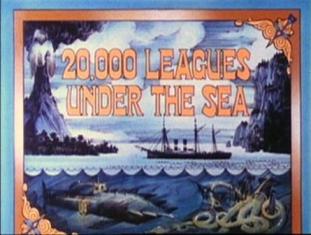
20,000 Leagues Under the Sea is a 1985 Australian made-for-television animated film from Burbank Films Australia. The film is based on Jules Verne's classic 1870 novel, Twenty Thousand Leagues Under the Seas, and was adapted by Stephen MacLean. It was produced by Tim Brooke-Hunt and featured original music by John Stuart. The copyright in this film is now owned by Pulse Distribution and Entertainment and administered by digital rights management firm NuTech Digital.
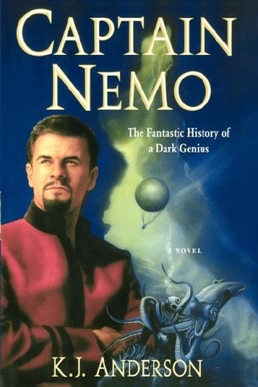
Captain Nemo: The Fantastic History of a Dark Genius is a novel by Kevin J. Anderson, published in 2002 by Pocket Books. It is a secret history and crossover work, the central premise being that many of the things Jules Verne wrote about existed in real life as told to him by the real Captain Nemo.

John Ernest Williamson was an English filmmaker who invented the "photosphere" from which he filmed and photographed undersea. He is credited as being the first person to take an underwater photograph from a submarine.
Jules Verne's 1870 novel Twenty Thousand Leagues Under the Seas has been adapted and referenced in popular culture on numerous occasions.
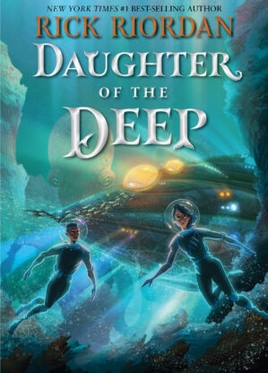
Daughter of the Deep is a middle grade fantasy-adventure novel by Rick Riordan. It was published on October 26, 2021, by Disney-Hyperion, and entered The New York Times Best Seller list.

Nautilus is a British ten-part television adventure drama created by James Dormer. It is a reimagining of Jules Verne's 1870 novel Twenty Thousand Leagues Under the Seas, presenting an origin story for Captain Nemo, an Indian prince-turned-crusading scientist.





















